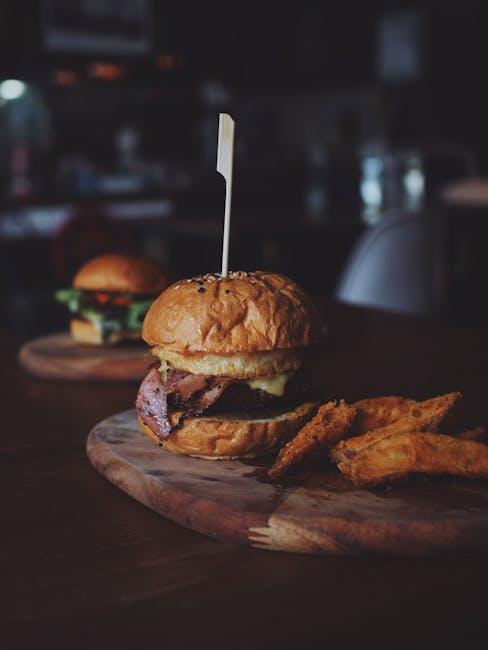In the vibrant tapestry of cinema, where heroes and legends are woven with threads of imagination and power, one filmmaker dared to reimagine the landscape of superhero films. Patty Jenkins, with her visionary direction of “Wonder Woman,” shattered glass ceilings and redefined the genre for a new era. Her work not only breathed life into a beloved comic book icon but also carved a path for female-driven narratives in a domain long dominated by their male counterparts. This article delves into how Jenkins’ masterful storytelling and bold creativity broke new ground, setting a precedent for future female superheroes to soar.
Redefining the Hero’s Journey through a Feminine Lens
Patty Jenkins revolutionized the traditional narrative by infusing the classic hero’s journey with a feminine perspective in “Wonder Woman”. Unlike the conventional male-centric arc, Diana’s journey is not solely about conquering external foes but also about embracing compassion, empathy, and inner strength. This reimagining is evident in how Diana approaches challenges, prioritizing understanding over aggression, and love over vengeance.
- Emotional Depth: Diana’s experiences reflect a nuanced emotional landscape, showcasing vulnerability as a source of power.
- Complex Relationships: Her interactions emphasize collaboration and mutual respect, challenging the trope of the lone hero.
- Inclusive Heroism: By embracing diverse narratives, Jenkins crafts a story that resonates with a broader audience, offering a fresh take on heroism.
This shift not only offers a more inclusive portrayal of heroism but also paves the way for future narratives to explore diverse perspectives, breaking away from the one-size-fits-all hero archetype.

Crafting Complex Characters Beyond Gender Stereotypes
Patty Jenkins’ approach to character development in Wonder Woman went beyond conventional gender norms, creating a superhero who is both powerful and deeply human. Rather than relying on typical tropes, Jenkins crafted Diana Prince as a character with a rich emotional landscape. Diana’s strength is multi-dimensional, showcasing vulnerability, compassion, and fierce determination. This nuanced portrayal allows audiences to connect with her on various levels, seeing her as more than just a warrior but as a leader with empathy and vision.
- Complex Motivations: Diana’s journey is driven by a genuine desire to protect humanity, not merely a quest for revenge or justice.
- Relatable Vulnerability: Her moments of doubt and internal conflict resonate with viewers, highlighting her authenticity.
- Empowering Relationships: Jenkins ensures that Diana’s interactions with others, from allies to adversaries, are grounded in mutual respect and growth.
This depth allows her to transcend the limitations of traditional gender roles, setting a new standard for how female superheroes can be portrayed in cinema.

Cinematic Techniques that Amplify Empowerment
Patty Jenkins utilized a range of cinematic techniques to craft a narrative that not only entertains but also empowers. One of the most notable techniques is her use of dynamic camera angles. By employing low-angle shots, Jenkins visually elevates Wonder Woman, allowing the audience to perceive her as a powerful and commanding presence. This subtle yet effective technique ensures that viewers see Diana as a figure of strength and authority.
- Color Palette: Jenkins embraced a vibrant and hopeful color scheme, moving away from the darker tones typical in superhero films. This choice symbolizes optimism and renewal, aligning with the film’s empowering themes.
- Slow Motion: Used strategically during combat scenes, slow motion highlights Diana’s agility and strength, emphasizing her prowess and grace.
- Soundtrack: The empowering score, led by Hans Zimmer and Junkie XL, enhances key moments, reinforcing the emotional impact and driving the narrative forward.
Through these techniques, Jenkins doesn’t just tell a story; she builds a world where empowerment is visually and emotionally palpable, setting a new standard for female superhero films.
Inspiring Future Generations of Filmmakers and Fans
Patty Jenkins’ groundbreaking work on Wonder Woman has left an indelible mark on both the film industry and audiences worldwide. By embracing a fresh perspective, Jenkins redefined what it means to be a female superhero on the big screen. Her vision combined powerful storytelling with a deep respect for the source material, capturing the essence of the iconic character while adding layers of depth and complexity. The result was a film that not only shattered box office records but also challenged stereotypes, inspiring a new wave of female-led superhero films.
- Empowering Characters: Jenkins focused on creating strong, multidimensional female characters who resonated with viewers of all ages.
- Authentic Storytelling: Her approach emphasized authenticity, weaving themes of courage, compassion, and justice throughout the narrative.
- Breaking Stereotypes: By challenging traditional gender roles, Jenkins paved the way for more inclusive storytelling in the superhero genre.
With Wonder Woman, Jenkins not only entertained but also sparked conversations about representation and equality in Hollywood. Her work continues to inspire budding filmmakers and avid fans alike, proving that stories of heroism and empowerment transcend gender, and that the possibilities for future storytelling are truly limitless.

